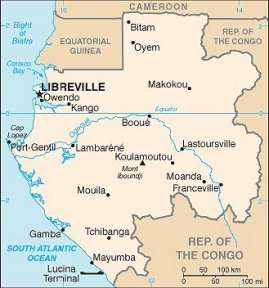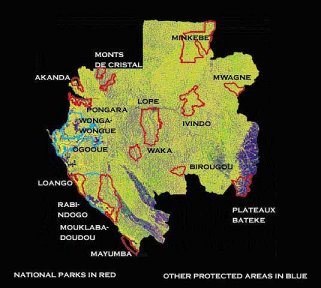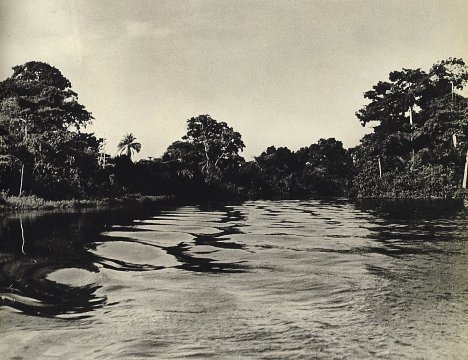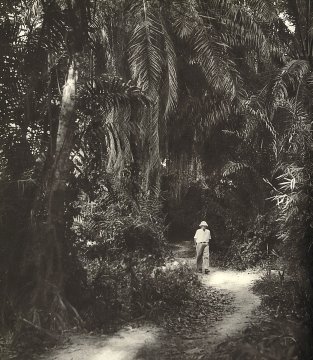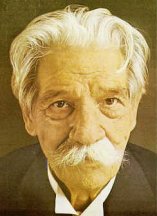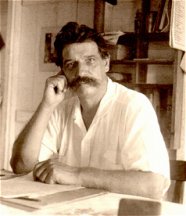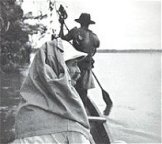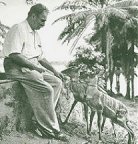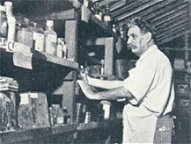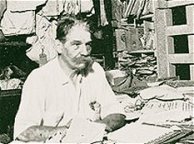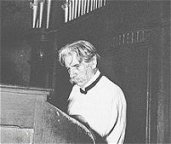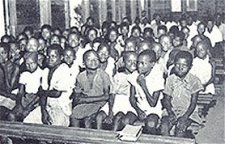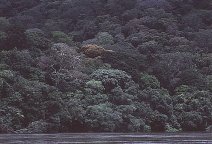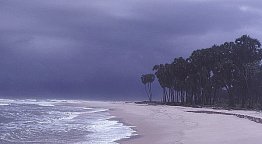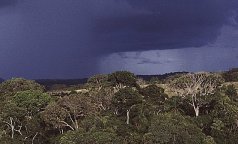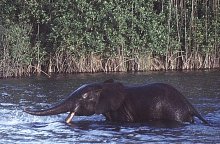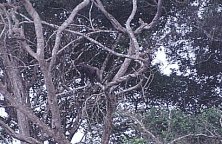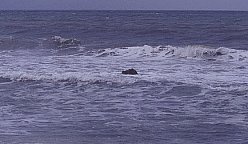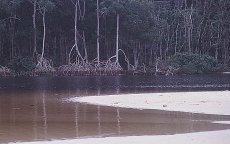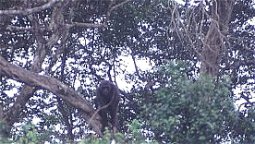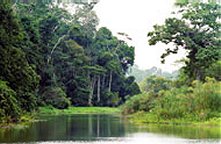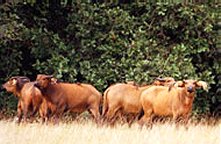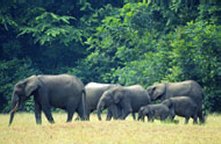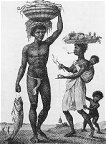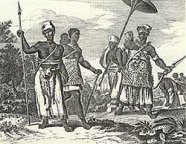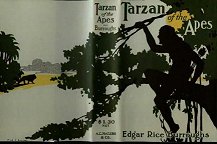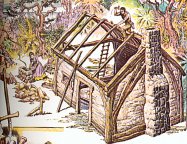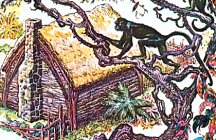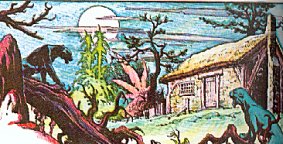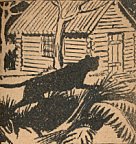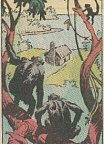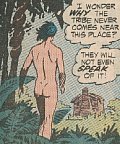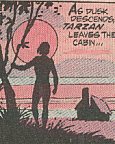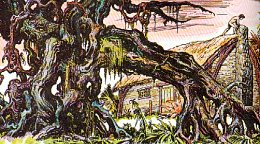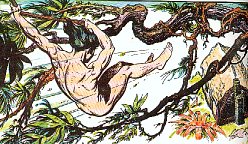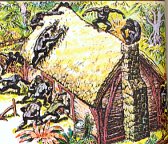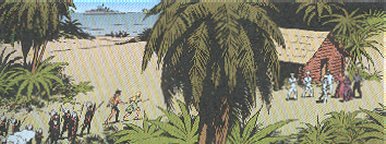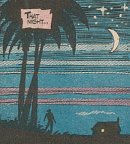One advantage of Tarzan's birthplace being so
near the future site of Albert Schweitzer's famous hospital is the fact
that we can establish some interesting detailed facts about the natives
of Tarzan's jungle. Marshall and Polling's biography of Schweitzer
provides us with an amazing paragraph which established the existence of
a cannibal tribe.
"The two main tribes served
by the hospital were the Galoas and the Pahouins. The Galoas were
the oldest, longest established tribe in the area, a people whose geographical
location and way of life had changed little since prehistory. They
were a more docile people than other tribes, which was almost their undoing.
When the French arrived in 1843, the Galoas had the area near Lambarene
to themselves, but an unexplainable migration of the Pahouins, or Fangs,
from the interior began to take place. Fighting their way into the
region, the Fangs, a cannibalistic people, prepared for warfare with the
Galoas. These cannibals were intelligent, quite advanced in the skills
of war and quick at adaptations to living conditions required for survival.
Their greater skills, as well as their belligerence, began gradually to
lead to the extermination of the Galoas when the French took matters into
their own hands and stopped the warfare and invasion, decreeing that both
tribes should share the land. An uneasy peace developed after 1880.
The members of the two tribes would work together, but never fully accepted
each other." ( 124-125.)
ERB explains the presence of the cannibal tribe of chief
Mbonga in chapter 9 of Tarzan
of the Apes as one driven out by white ivory and rubber traders
after a revolt in which they had killed a white officer and a small detachment
of his black troops.
"For three days the little
cavalcade marched slowly through the heart of this unknown and untracked
forest, until finally, early in the fourth day, they came upon a little
spot, near the bands of a small river, which seemed less thickly overgrown
than any ground they had yet encountered. Here they set to work to
build a new village . . ." (104).
After building a village in a great clearing with huts, palisades,
and fields planted, Kulonga, the son of Mbonga killed Kala, Tarzan's ape
mother, and the enmity between Tarzan and the black tribesmen began.
We can safely assume that this people were the Pahouins or Fangs, mentioned
above. There is a good deal of information on these people in wikipedia.
http://en.wikipedia.org/wiki/Beti-Pahuin#Fang
Those who are interested in researching the native religion
of the Fang and comparing it with ERB's description of witch-doctors much
involved with Tarzan in his youth, can begin at:
http://en.wikipedia.org/wiki/Bwiti
Tarzan's battles with witch-doctors, or N'ganga, were
on-going throughout most of his life. In fact, the Bwiti ceremonies
are practiced alongside Christianity to this day.
"Bwiti ceremonies are led
by a (male or female) spiritual leader called N'ganga who is a very important
member of the community and has extensive knowledge of traditional healing
practices, hexes and spells. The crucial rite of Bwiti is the initiation
ceremony, when young Gabonese men take iboga for the first time in the
men's hut to become members of the religion. There are many ceremonies
at different times of the year to give homage to the ancestors. Special
ceremonies may be held to heal sick persons or drive out harmful spirits.
While early forms of Bwiti excluded women, modern chapels include men and
women." from a longer article at Wikipedia - "Bwiti".
I believe that this article opens the way to an entire branch
of ERB research. I find it interesting to see that the great migrations
of the Fang led to the fatal contact with the young Tarzan, and that these
peoples are now the successful majority in present day Gabon - among those
whom Schweitzer set up his hospital to help. Surely Lord Greystoke
must have seen the irony of this situation. Schweitzer too had his
battles with the native witch-doctors when establishing his brand of Western
medicine. He was simply another witch-doctor, called "Oganga" or
"White witch-doctor" with his own fetishes, including the cardboard tags
the natives wore around their necks to establish some form of identity.
These tags became powerful medicine in themselves, and the people who were
lucky enough to get one never misplaced it throughout their entire lives.
Marshall and Polling also note that Schweitzer had run-ins
with the Leopard Men, who rather than concocting longevity pills out of
the glands of young women, were an organization of what might be called
animist fundamentalists. The problem was that their young people
were coming into contact with the outside world and giving up the "faith
of their fathers" for Christianity or becoming outright atheists.
There was enough of the old superstition left to cast powerful spells to
hold the doubting Thomas's in line, or if that failed, the quick slitting
of the throat with iron leopard claws put an end to newfangled ways.
Schweitzer was careful to keep his mouth shut about religion while practicing
his medicine because he noticed how these modernizing changes cut off the
young people from their relatives and tribes. Pun intended.
One can speculate that Tarzan would have thought little
of any Kuvuru pills he came by since if any had been produced they would
have only been effective on true believers like other witch-doctor spells.
One MIGHT speculate that Tarzan had a much closer contact with the Fang
in his youth and had adopted some of their superstitions, but it seems
unlikely. The only strong support for this idea would be if he had
been raised by the natives rather than apes, which makes for a lot of revisionism.
I think the fact that he passed the pills around to everyone, even to his
monkey friend, Nkima, shows that he really considered them to be an enormous
joke.
Tarzan mentioned something about a witch-doctor ceremony
which had been performed upon him that presumably gave him good health
and long life, which demonstrates a fondness or at least an acceptance
of native ways in later life. Of course, he was also the chief of
the Waziri tribe, but they seemed to be more transformed by the relationship
than Tarzan. According to Schweitzer's reports on as simple a thing
as wishing one well greatly improving the health of natives, something
as strong as a ceremony could indeed help one to live well and perhaps
even longer. However, unless Tarzan was a fetish-carrying animist,
it likely that he went along with the ceremony more for the sake of the
witch-doctor, who was giving him a gift, than for anything he expected
to get out of it. I would surmise that the immortal hero idea came
more from Lord Greystoke's biographer than from his own lips.

Juxtaposed Timelines

1913
Albert Schweitzer
made his first sojourn in Africa, building a hospital near Lambarene, Gabon,
French Equatorial Africa.
Tarzan is involved with events
in The Jewels of Opar.
I think Tarzan was too busy with
problems of his own to be aware of a little hospital being built near his
boyhood home across the continent.
Schweitzer talks about the efficacy
of the jungle drums, but it is unlikely that they went as far as Kenya!
Schweitzer's hospital on the Ogowe
River was just northeast of where Farmer places the Greystoke cabin where
Tarzan was born.
Farmer's location is "halfway between
Iguela and Sette Cama, approximately 2 degrees south latitude, on the middle
point of the coast of the Parc National du Petit Loango of the present-day
Gabon Republic" (Farmer, Tarzan Alive, 14).
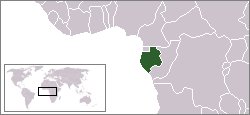
This map shows the location of Gabon on the African continent.


